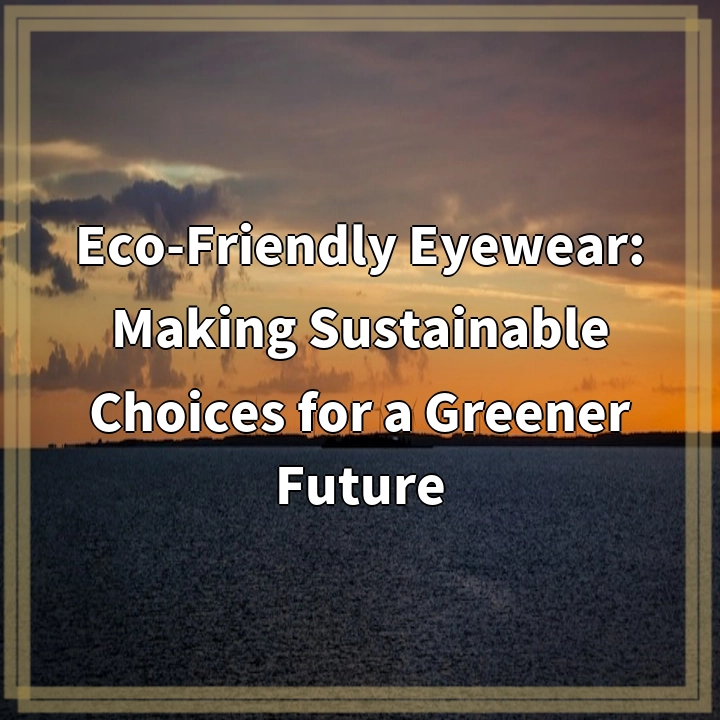
What is Eco-Friendly Eyewear?
Eco-friendly eyewear refers to eyeglasses and sunglasses that are produced using sustainable and environmentally responsible practices. These eyewear options prioritize the use of recycled or eco-friendly materials, minimize waste during production, and often support social and environmental causes.
Real-World Problems
Eyewear industry, like many others, faces challenges that have negative impacts on the environment and communities. Here are some of the real-world problems associated with conventional eyewear:
1. Resource Depletion
Traditional eyewear production heavily relies on the extraction of non-renewable resources, such as petroleum-based plastics and metals. This leads to increased strain on ecosystems, habitat destruction, and depletion of natural resources.
2. Pollution and Waste
The manufacturing processes of conventional eyewear often involve the use of toxic chemicals and generate significant amounts of waste. Harmful chemicals can find their way into waterways, polluting ecosystems and causing harm to aquatic life. Moreover, plastic waste, including packaging and discarded eyewear, ends up in landfills, further contributing to the global waste problem.
3. Labor and Human Rights Issues
Many eyewear manufacturers outsource production to countries with lower labor standards and wages. This can result in poor working conditions, exploitation of workers, and violation of human rights.
Addressing the Problems with Eco-Friendly Eyewear
Eco-friendly eyewear brands and initiatives are emerging to tackle these issues by adopting sustainable practices and promoting ethical manufacturing. They focus on:
1. Sustainable Materials
Eco-friendly eyewear incorporates materials like recycled plastics, bamboo, wood, and biodegradable acetate. These materials have a lower environmental impact, are less resource-intensive, and can be recycled or composted.
2. Circular Economy
Some eyewear companies are embracing circular economy principles by implementing take-back programs. These programs aim to recycle or repurpose old eyewear, reducing waste and promoting resource conservation.
3. Fair Trade and Ethical Production
Eco-friendly eyewear brands often prioritize fair trade practices, ensuring fair wages and safe working conditions for employees. They also promote transparency in their supply chains to avoid sourcing materials from unethical or environmentally harmful sources.
In Conclusion
Eco-friendly eyewear offers a pathway towards a more sustainable and greener future. By making informed choices and supporting brands that prioritize environmental and social responsibility, we can contribute to mitigating the negative impacts of the eyewear industry and promote a healthier planet for future generations.

Solutions for Eco-Friendly Eyewear
Addressing the challenges associated with conventional eyewear, eco-friendly eyewear brands and initiatives offer sustainable solutions:
1. Sustainable Materials
Eco-friendly eyewear incorporates materials like recycled plastics, bamboo, wood, and biodegradable acetate, reducing reliance on non-renewable resources and minimizing environmental impact.
2. Circular Economy
Implementing take-back programs, eco-friendly eyewear brands encourage recycling or repurposing of old eyewear, promoting resource conservation and reducing waste in the industry.
3. Fair Trade and Ethical Production
By prioritizing fair trade practices and ensuring safe working conditions, eco-friendly eyewear brands promote ethical production and transparency in their supply chains. They avoid sourcing materials from unethical or environmentally harmful sources.
In Conclusion
Eco-friendly eyewear provides sustainable solutions to the real-world problems associated with conventional eyewear. By embracing sustainable materials, implementing circular economy practices, and promoting fair trade and ethical production, these brands contribute to a greener future for the eyewear industry.















